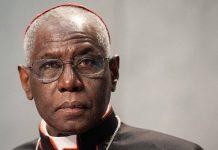St. Charbel Makhlouf is typically a contemplative Arab Saint, who carries in the depth of his gaze all the mystery of the nights of the East, as well as those of his own meditations, of his own soul.
Newsroom (31/07/2022 4:00 PM, Gaudium Press) Saint Charbel Makhlouf was typically a contemplative Arab, who carries in the depths of his eyes all the mystery of the nights of the East, as well as those of his own meditations, of his own soul.
A man who spent his entire life in a monastery, immersed in complete silence, in continuous contemplation, and in complete obedience, seeking only and exclusively to know and love God, and to do His will whatever the cost. To this end, he faced difficulties and catastrophes, with the supernatural spirit and obstinacy of the saints.
He acquired a high degree of interiority, a total detachment from himself, remaining unmoved when he was humiliated and despised within his religious community.
One notices in him an indifference to everything that does not refer to God; no ambitions of honor, no worries about money, no vanity, no sentimentality, no self-pity. Only a firm constancy in reaching the ideal – God – and a cleanliness of soul by which, trusting in the divine mercy, he knows he pleases Him.
If anyone intends to offer him anything that would divert him from his spiritual path, the refusal will be so complete that he will not have the courage to do so. He previously disarms any dishonest proposal.
Facing such a man, the only reasonable attitude is silence, respect, and, finally, the request for prayers.
However, he also reveals the soul of a sufferer. One perceives mountains of suffering crystallized inside him. But he suffered with such temperance that all the storms blew inside him and made him more rigid, more firm.
So he is an old man but fully composed, not decrepit. A deeply balanced man, who has accepted suffering completely, and has remained beyond pain; nothing frightens him anymore. On earth, he has no fear but to sin; no hope but that of Heaven.
Martyr of the life of obedience
As a boy, he took a cow to graze in a field belonging to his family. There was a kind of cave there that served as a refuge during the heat. When he noticed that the animal had had enough, he would tell it:
“Rest here; now it is my turn and I will recite my prayers.
The she-goat would lie down and remain quiet until he had finished praying. This marvel was repeated so many times that the place changed its name and became called “el-Qaddis”, or “the Holy place”“.
When he became a young man, he entered the religious order of Maronite hermits and wore the habit that in the flowery language of the East was known as the “angelic garment”: a black tunic, with abundant cloth, and a cord made of goatskin. It was named after Charbel, a second-century martyr from Edessa, commemorated in the Maronite rite on September 5.
As a novice, Saint Charbel distinguished himself by perfect observance of the rule, with much humility. One might think that this observance represents a lack of personality, of self-control, because one does what others command.
Nothing could be more mistaken, for there is no man for whom it is not difficult to do what others command. The life of obedience, in itself, is a true martyrdom.
This martyrdom St. Charbel Makhlouf lived, in an immolation to do everything according to the spirit of the Founder and not at his whim, moved by worldly inspiration.
Deep faith
His contemporaries attest that in everything he did, you could feel his deep faith. For example, while praying Mass, at the moment of the Consecration, sometimes tears would come out of his eyes. Father Francesco Sibrini, who knew St. Charbel thirteen years before his death, said:
“He did not allow the material used before the celebration of the Mass, such as the soap and the hand towel, to be used for another purpose. When the Eucharist was finished, immediately after the thanksgiving, he would have the hand towel washed, so that his hands would always be modelly clean when celebrating the holy sacrifice.”
If he thus took care to remove the dust from his hands, how much more did he do to eradicate the dust from his soul!
Other religious said:
“We often attended Mass celebrated by him and it seemed to us that he saw with his eyes the Son of God. His voice was low and his face reflected his inner joy.
That is, one had the impression that Saint Charbel was conversing with Our Lord during the Eucharistic celebration.
A lay brother said that he seemed to know how to do nothing but pray, celebrate Mass and observe the rule. And another said, “Charbel was distinguished from all the other monks as a great oak tree is distinguished from a little field herb.”
He died on Christmas Eve 1898.
Saint Charbel Makhlouf is a magnificent model of a man who embraced the paths of holiness from the very beginning of his existence and carried it through to the end of his days. And after his death, this path of perfection is crowned by stupendous miracles.
In fact, according to the monastery of St. Maron, there are about 29,000 miracles documented in the monastery’s archives, obtained through the intercession of St. Charbel.
Plinio Corrêa de Oliveira



































